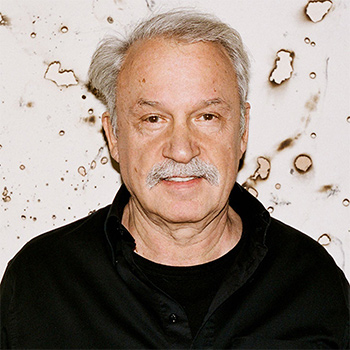
Giorgio Moroder is an Italian composer, producer, and electronic music pioneer, one of the key figures who permanently changed the face of pop and club music. He is widely regarded as the «father of disco» and one of the founders of the synthesizer era. Working with Donna Summer, David Bowie, Freddie Mercury, Daft Punk and many others, Moroder laid the foundations of what we now call dance music, synthpop and modern electronic soundtrack aesthetics.
Early years
Giovanni Giorgio Moroder was born on 26 April 1940 in Ortisei, South Tyrol, Italy. From an early age he was fascinated by both technology and music: he built his own amplifiers, played bass guitar in a school band and wrote his first instrumental pieces.
After finishing school, he began working in nightclubs across Europe — in Austria, Germany and Switzerland, where he quickly mastered the basics of studio recording. His technical mindset allowed him to merge music and machines — this is where his desire to create a «new, machine-like sound» was born.
Career beginnings and breakthrough
In the early 1970s Moroder moved to Munich and opened his own studio, Musicland Studios, where Led Zeppelin, Queen and Electric Light Orchestra would later record. It was there that he met a young singer, Donna Summer, and in 1975 they recorded the hit “Love to Love You Baby”.
The song became a sensation: for the first time, electronic rhythms, sequencer patterns and the Moog synthesizer created a sensual, hypnotic sound — a new language for pop music. But the real explosion came in 1977, when Moroder and Summer released “I Feel Love”, the world’s first fully synthesized disco track. This single became the foundation for entire future genres — from techno to trance.
«When I first heard I Feel Love, I knew: this was the sound of the future» — David Bowie.
The 1980s: soundtracks and global success
In the 1980s Giorgio Moroder became one of Hollywood’s go-to composers. He wrote soundtracks that are still considered benchmarks today:
-
Midnight Express (1978) — «Oscar for Best Score» and a «Golden Globe» for its groundbreaking electronic soundtrack.
-
Scarface (1983) — aggressive synths and beats that helped define the sound and mood of the 1980s.
-
Top Gun (1986) — the song Take My Breath Away (Berlin) received both an Academy Award and a Golden Globe.
-
Flashdance (1983) — What a Feeling performed by Irene Cara brought him yet another Oscar.
Moroder was the first to prove that electronic music = emotion, not just rhythm. He used synthesizers not as decoration, but as a full-fledged orchestra, building drama and storytelling purely through sound.
Technological innovation
Giorgio Moroder was among the first to work extensively with the Moog Modular, Roland System 700, ARP 2600 and hand-programmed tape sequencers. His experiments became the blueprint for an entire industry: it was Moroder who popularized the electronic bass, pulsating beat and the concept of loop-based production, without which modern techno and house simply wouldn’t exist.
He was also the first to fully embrace the extended mix format — long club remixes tailored for DJs, which later became a standard in dance culture.
Working with legends
Moroder is the man behind many of the greatest names of the 20th century. Some of his key collaborations include:
-
Donna Summer — albums Bad Girls, Once Upon a Time, I Remember Yesterday.
-
David Bowie — the soundtrack for Cat People (1982) and the iconic song Putting Out Fire.
-
Freddie Mercury — Love Kills (1984), recorded for Moroder’s restoration of the silent film Metropolis.
-
Blondie — Call Me (1980), one of the defining anthems of the 1980s.
-
Japan, Limahl, Philip Oakey (The Human League), France Joli — all of them were influenced by Moroder’s style and production approach.
Comeback in the 2010s
After almost two decades of relative silence, Giorgio Moroder unexpectedly returned to the spotlight.
In 2013, he was invited by Daft Punk to record the track “Giorgio by Moroder” for their album Random Access Memories. The track features Moroder’s own spoken-word narration over a bed of analog synths — a tribute to the man who helped invent the language of the future.
In 2015 he released the album Déjà Vu, featuring Kylie Minogue, Sia, Britney Spears, Charli XCX — a symbolic bridge between three eras: the 1970s, the 1980s and the 21st century.
Awards and legacy
-
3 Academy Awards (for Midnight Express, Flashdance, Top Gun)
-
4 Golden Globes
-
3 Grammy Awards
-
A star on the Hollywood Walk of Fame
-
Member of the Dance Music Hall of Fame
Moroder has had a colossal impact on the development of synthpop, Hi-NRG, Italo Disco, techno and electronic film scoring. His techniques shaped the sound of artists such as Jean-Michel Jarre, Pet Shop Boys, Depeche Mode, Daft Punk, The Weeknd.
Interesting facts
-
His favorite film is Fritz Lang’s «Metropolis». In 1984 Moroder produced a restored version with a brand new electronic soundtrack, bringing together silent cinema and synthesizers.
-
He has more than 400 releases to his name as a producer and composer.
-
He was one of the first musicians to use the Synclavier computer-based sequencer in the early 1980s.
-
His track Chase (1978) became the first soundtrack composition ever to be released as a 12-inch single specifically for clubs.
-
Moroder’s personal motto: «You have to combine the mechanics of machines with the soul of a human being.»
Legacy and influence
Today the name Giorgio Moroder is synonymous with the electronic revolution. He became a bridge between the analog and digital eras, between the discotheques of the 1970s and the festivals of the 21st century.
His work proves that technology in music is not about coldness — it is a new way to express emotion.

